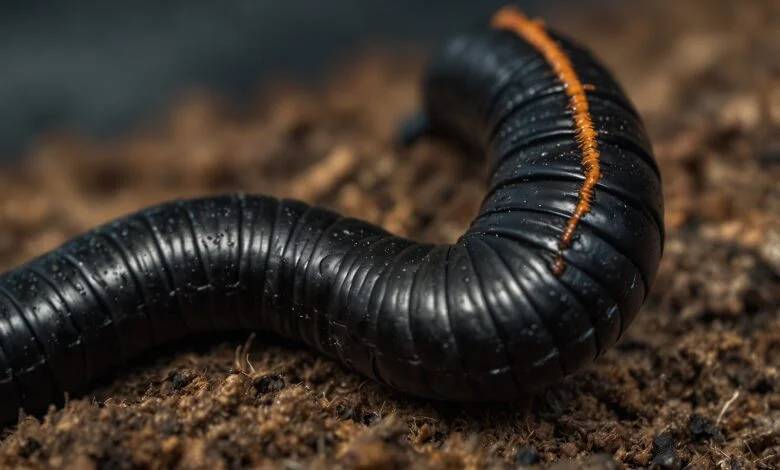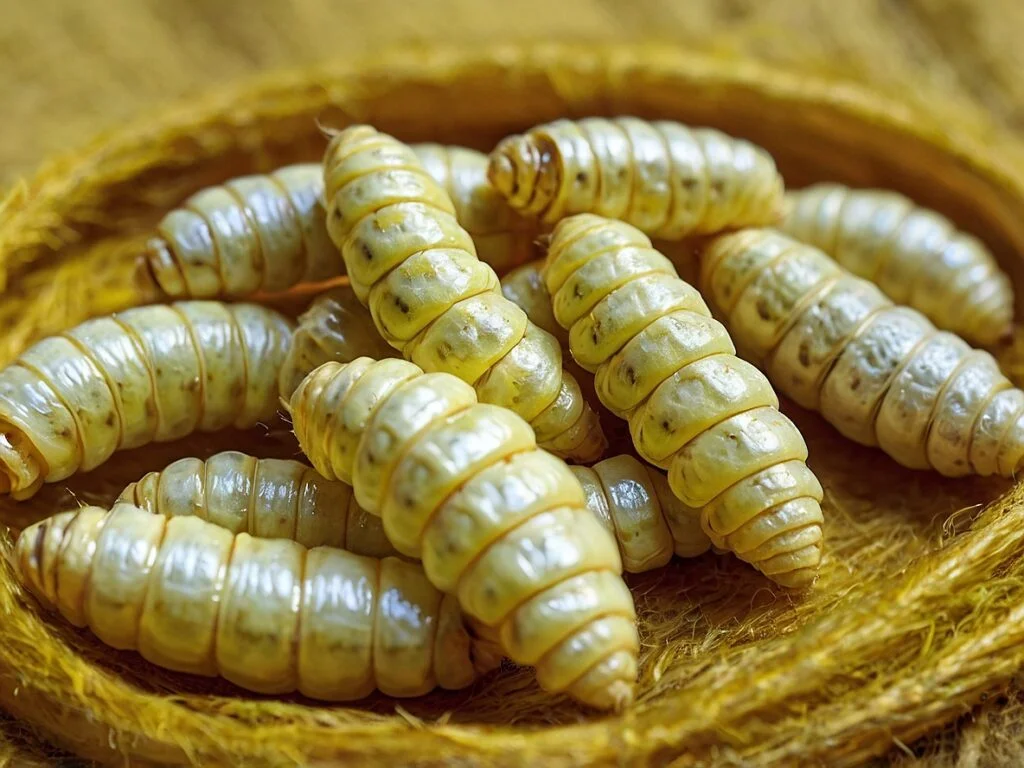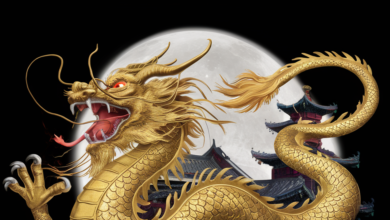
Table of Contents
Introduction
Gu (蛊), an enigmatic and intriguing concept, originates from ancient Chinese folklore and traditional medicine. This mysterious entity, created through specific and often gruesome methods, is deeply embedded in Chinese cultural and historical narratives. This article explores the historical descriptions, symptoms, methods of creation, and prevention of Gu poisoning while also examining its modern cultural significance.
In Chinese tradition, the Miao ethnic group is believed to possess knowledge about the use of Gu. According to various historical and folkloric sources, the Miao, one of China’s ethnic minorities, are reputed to master this ancient practice of magic and poison. The Miao are often depicted in ancient texts as experts in creating and manipulating Gu, a toxic and magical substance produced by confining several poisonous animals in a container until only one survives, absorbing the toxins of the others.
Historical Descriptions and Folklore
The concept of Gu (蛊) has appeared in numerous ancient Chinese texts, often depicted as a malevolent force or poison. Historically, Gu has been linked to various ailments, from diseases caused by parasitic infections to the consequences of indulging in excessive sexual activities. For instance, texts like «Chishui Xuanzhu: Chonggu» (赤水玄珠·虫蛊) and «Zhengzhi Huibu» (证治汇补) describe Gu as a result of insect toxins accumulating in the body, leading to severe illness. Another perspective from «Zuo Zhuan: Zhaogong Yuannian» (左传·昭公元年) describes Gu as a disease stemming from sexual excess.
In folklore, Gu is also associated with the creation of powerful poisons. The process often involved placing multiple venomous creatures in a container until only one survived, absorbing the toxins of the others. This survivor was then considered a potent Gu, as detailed in «Zhuyuanyuan Houlun» (诸病源候论).
Gu’s representations in ancient texts and folklore reflect a society grappling with the mysteries of disease and the supernatural. These stories often served as moral lessons or cautionary tales, warning against behaviors seen as socially or morally unacceptable.
The variety of ailments attributed to Gu is vast, reflecting the range of conditions and diseases that ancient practitioners sought to explain through this concept. The ancient Chinese believed that these poisons could infiltrate and corrupt not only the body but also the spirit, leading to profound and often terrifying symptoms.
Symptoms of Gu Poisoning
Gu poisoning manifests in various horrifying ways, depending on the type of Gu involved. Some notable types include:
- Golden Silkworm Gu (金蚕蛊): Causes severe abdominal pain and swelling, leading to death within days.
- Bamboo Splinter Gu (篾片蛊): Involves a splinter causing progressive pain and eventual death.
- Stone Gu (石头蛊): A stone that, when stepped on, causes debilitating illness over months.
- Loach Gu (泥鳅蛊): Ingested loaches cause sensations of movement within the body, leading to death if untreated.
- Spirit Harm Gu (中害神): Affects the mind, causing hallucinations, severe mental distress, and suicidal tendencies.

These symptoms illustrate the wide-ranging and often terrifying effects of Gu poisoning, which were deeply feared in ancient times. The diversity in symptoms also points to a wide array of conditions and diseases that ancient practitioners attempted to explain through the concept of Gu.
- General Symptoms: In addition to the specific symptoms mentioned above, Gu poisoning often presented with more generalized signs of severe illness. These could include intense pain, fever, swelling, and severe digestive issues. Victims might also experience skin rashes, ulcers, or other dermatological manifestations, adding to the terror and mystery surrounding these conditions.
- Psychological and Behavioral Symptoms: Gu poisoning was believed to affect not only the body but also the mind and spirit. Victims might suffer from severe psychological distress, including anxiety, paranoia, and hallucinations. In extreme cases, this could lead to madness or suicidal tendencies. These psychological effects underscore the belief in Gu as a spiritual or supernatural force, capable of corrupting the very essence of a person.
- Chronic and Latent Symptoms: Some types of Gu were believed to lie dormant within the body, causing chronic symptoms over a long period. These could include persistent weakness, malaise, and a gradual decline in health. Such conditions were particularly feared because they were difficult to diagnose and treat, and their origins remained shrouded in mystery.
Methods of Creating Gu
The creation of Gu is a meticulous and often secretive process. Common methods include:
- Insect Jar Method: Multiple poisonous creatures are placed in a container to fight until one remains, imbued with the combined toxins. This process is vividly described in the Sui Shu (隋书·地理志).
- Burial Method: For example, the creation of Golden Silkworm Gu involves burying twelve types of poisonous animals at a crossroads and retrieving them after 49 days.
These methods underscore the complexity and danger associated with creating Gu. The processes involved are not merely about creating a potent poison but also involve intricate rituals and a deep understanding of the natural world.
- Rituals and Preparations: The creation of Gu often required elaborate rituals and meticulous preparations. Practitioners would purify themselves through fasting, prayers, and other spiritual practices. These rituals were believed to invoke the necessary supernatural forces and ensure the success of the process. The level of preparation and the complexity of these rituals highlight the deep-seated beliefs in the power and danger of Gu.
- Secrecy and Protection: Due to the dangerous nature of Gu, its creation was often shrouded in secrecy. Practitioners would go to great lengths to protect their methods from being discovered. This included conducting the rituals in isolated locations and taking precautions to ensure that no one outside the immediate circle was aware of the process. The need for secrecy also extended to the use and application of Gu, as the potential for it to be used against the creator was a constant threat.
- Environmental Factors: The creation of Gu also required a deep understanding of environmental factors. Practitioners would carefully select the location and timing for their rituals, often choosing specific lunar phases or seasonal conditions believed to enhance the potency of the Gu. This aspect of Gu creation reflects a broader understanding of the interconnectedness of natural forces and their influence on health and disease.
Case Studies of Gu Creation
A notable case from the banks of the Jinsha River illustrates the meticulous preparation involved in creating Gu. The household would clean the central hall thoroughly, and family members would purify themselves by eating vegetarian food and offering prayers to their ancestors. On the fifth day of the fifth lunar month, they would collect twelve types of crawling creatures, ensuring none could fly or run fast. These creatures were placed in a jar and left to fight until only one remained, transforming into a Gu.
Secrecy was paramount, as the discovery of the process could lead to the Gu being stolen or used against its creator. This level of secrecy and ritualistic process highlights the serious nature of Gu creation in traditional Chinese culture.
- Historical Case Studies: Numerous historical records document cases of Gu creation and use. These case studies provide valuable insights into the practical aspects of Gu and its impact on ancient Chinese society. They often include detailed accounts of the symptoms experienced by victims, the methods used to identify and treat Gu poisoning, and the social and legal ramifications of being accused of Gu-related practices.
- Cultural and Social Context: The creation and use of Gu were deeply embedded in the cultural and social context of ancient China. Practices associated with Gu were often linked to specific regions or ethnic groups, reflecting the diverse cultural landscape of the time. This regional variation highlights the complexity and richness of ancient Chinese medical and magical traditions。
The War of Witchcraft and Gu (巫蛊之战)
The War of Witchcraft and Gu (巫蛊之战), a significant event in Chinese history, demonstrates the extensive use of Gu in political and military contexts. This conflict took place during the Han Dynasty and involved the use of witchcraft and Gu to undermine political rivals and gain power.
- Historical Context: The War of Witchcraft and Gu occurred during the reign of Emperor Wu of Han (汉武帝). It was a time of political intrigue and power struggles within the Han court. The use of Gu and other forms of witchcraft became tools for factions within the court to eliminate rivals and consolidate power.
- Accusations and Trials: High-ranking officials and members of the royal family were accused of using Gu to harm the emperor and other court members. These accusations led to a series of trials and purges, resulting in the execution or exile of many individuals. The trials were marked by confessions obtained under torture, reflecting the fear and paranoia surrounding Gu and witchcraft.
- Military Implications: The War of Witchcraft and Gu also had significant military implications. Commanders and soldiers believed to be under the influence of Gu were viewed with suspicion, and their loyalty was questioned. This atmosphere of distrust weakened the military’s effectiveness and morale, illustrating the profound impact of Gu on ancient Chinese warfare.
- Cultural and Social Impact: The War of Witchcraft and Gu had a lasting impact on Chinese culture and society. It reinforced the association of Gu with treachery and malevolence, and it highlighted the role of supernatural beliefs in shaping political and military strategies. The event also underscored the dangers of using fear and superstition as tools of control, as they could lead to widespread persecution and instability.
Prevention and Treatment
Identifying and treating Gu poisoning was crucial for survival. Various methods were developed to detect Gu poisoning, such as:
- Raw Beans or Licorice Root Test: Eating raw beans or chewing licorice root and observing adverse reactions.
- Silver Needle Test: Inserting a silver needle into a cooked egg; if the egg turned black, it indicated poison.
Preventative measures included:
- Avoiding contact with overly clean households suspected of harboring Gu.
- Carrying garlic when traveling and consuming it before meals.
- Using specific antidotes, such as crushed jujube seeds, and avoiding alcohol to neutralize poison.
Preventing and treating Gu poisoning required a deep knowledge of traditional medicine and a keen awareness of one’s environment. These practices reflect a society deeply concerned with health and well-being and willing to employ a wide range of methods to protect against unseen threats.
- Traditional Remedies and Antidotes: Ancient Chinese medical texts provide a wealth of information on traditional remedies and antidotes for Gu poisoning. These often involved the use of herbs, minerals, and other natural substances believed to counteract the effects of the poison. The complexity and variety of these remedies reflect the sophisticated understanding of toxicology in ancient Chinese medicine.
- Diagnostic Techniques: In addition to the tests mentioned above, practitioners developed a range of diagnostic techniques to identify Gu poisoning. These could include observing the patient’s symptoms, examining their physical appearance, and conducting detailed interviews to uncover potential exposure to Gu. These diagnostic methods were crucial for accurately identifying the presence of Gu and determining the appropriate course of treatment.
- Preventative Practices: Preventing Gu poisoning was a significant concern in ancient Chinese society. This included both individual practices, such as carrying protective amulets or consuming certain foods, and community-wide measures, such as regulating the activities of known Gu practitioners. These preventative practices reflect the pervasive fear of Gu and the lengths to which people would go to protect themselves from its effects.
Modern Implications and Cultural Significance
Today, the study of Gu offers valuable insights into ancient Chinese culture and traditional medicine. Modern interpretations of Gu appear in literature, films, and other media, reflecting the enduring fascination with this mysterious concept. Understanding Gu also sheds light on ancient medical practices and the evolution of toxicology in Chinese medicine.
- Cultural Representations: In contemporary Chinese culture, Gu is often referenced in stories and films that explore themes of mystery, supernatural power, and the human capacity for both good and evil. These modern portrayals continue to captivate audiences, illustrating the timeless nature of Gu as a cultural symbol. This enduring fascination with Gu reflects broader cultural themes related to fear, power, and the unknown.
- Academic and Scientific Interest: The study of Gu continues to attract academic and scientific interest. Researchers in fields such as anthropology, history, and medicine examine historical texts and archaeological evidence to better understand the practices and beliefs surrounding Gu. This interdisciplinary approach provides valuable insights into the cultural and scientific contexts of ancient Chinese medicine.
- Traditional Medicine and Modern Health Practices: The historical practices surrounding Gu offer valuable lessons for modern health practices. While modern medicine has largely moved away from concepts like Gu, the traditional remedies and diagnostic techniques developed in response to Gu poisoning contribute to our understanding of early toxicology and the history of medicine. These historical practices also highlight the importance of a holistic approach to health, considering both physical and psychological factors.
- Ethical and Legal Implications: The practices associated with Gu also raise important ethical and legal questions. Historical records document cases where individuals were accused of creating or using Gu, often with severe social and legal consequences. These cases provide valuable insights into the ethical and legal frameworks of ancient Chinese society and the ways in which these frameworks have evolved over time.
Conclusion
The lore of Gu provides a window into the fears, beliefs, and practices of ancient Chinese society. From its diverse forms and symptoms to the elaborate methods of creation and prevention, Gu remains a testament to China’s rich cultural heritage. By studying Gu, we gain a deeper appreciation for the complexity of ancient medical practices and their ongoing influence on modern culture. As both a historical artifact and a symbol of enduring mystery, Gu continues to captivate and intrigue, offering endless possibilities for exploration and understanding.
The story of Gu is not just about ancient superstitions but about the human quest to understand and control the world around us. It highlights the intersections of medicine, magic, and morality and serves as a reminder of the complexities of human culture and the ways in which we seek to make sense of the unknown. Gu’s legacy in modern culture, medicine, and academia underscores its enduring significance and the timeless nature of the questions it raises about health, power, and the supernatural.
In conclusion, the study of Gu enriches our understanding of ancient Chinese society and its approaches to health and disease. It challenges us to consider the ways in which cultural beliefs and practices shape our understanding of the world and our responses to the challenges we face. As we continue to explore the mysteries of Gu, we gain valuable insights into the human experience and the enduring quest for knowledge and understanding.

Click here for more information!
